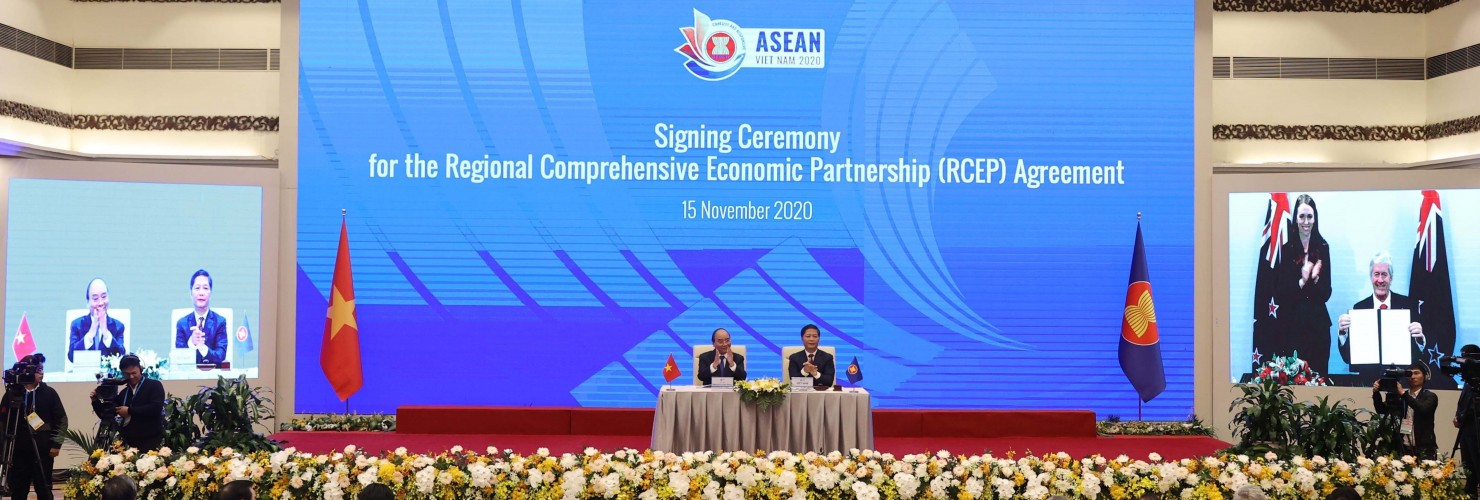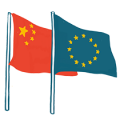

China’s rule and standard-setting ambitions for global trade
Implications for EU trade policy
The following report examines China’s rule and standard-setting ambitions in the context of global trade. It focuses on three key areas:
- China’s domestic priorities and multilateral engagement
- China's free trade agreement (FTA) strategy and rationale
- China's less conventional approaches to trade-related standard-setting
The report was commissioned by the German Federal Ministry for Economic Affairs and Energy (BMWi) and completed in July 2020.
Since its internal publication, several important developments have occurred. Most notably, the signing of the fifteen-nation Regional Comprehensive Economic Partnership (RCEP) on 15 November 2020, after eight years of difficult negotiations. This has been interpreted as a symbolic, and possibly also a strategic, win for China and has put pressure on both Washington and Brussels to highlight or enhance their own economic presence in Asia. As it stands, the EU and the US are now conspicuously absent from the region’s two largest trade pacts: RCEP and the Comprehensive and Progressive Agreement for Trans-Pacific Partnership (CPTPP).
Far from being a China-dominated endeavor, RCEP nevertheless puts Beijing at the center of the largest trade grouping in existence covering roughly 30 percent of the world’s GDP and population. Its influence within this bloc has been further strengthened by India’s decision to pull out of the deal in 2019.
As it stands today, RCEP does little in terms of setting new rules and standards. Despite its objective of being a “modern, comprehensive, [and] high quality” trade agreement, many compromises have had to be made to cater for the very different developmental needs of its member countries.
The RCEP agreement lays the foundations of a nascent Asian trade bloc
RCEP is therefore best described as a shallow agreement focusing mainly on gradual trade and investment liberalization rather than on more novel behind-the-border issues. Its main achievement has been to bring the region’s complex set of crisscrossing trade agreements under a more coherent and harmonized umbrella. As such, it effectively lays the foundations of a nascent Asian trade bloc. A brief overview of RCEP’s chapters can be found here.
It is precisely RCEP’s potential to become an increasingly economically integrated and China-centric regional grouping that is of note. It provides Beijing with a significant platform to shape the rules, norms and standards of the future. Much like China’s other FTAs, RCEP is set to evolve with time. Future upgrades are thus likely to follow. China’s current approach to “deep” FTAs is essentially twofold: first, catch up and adopt (where possible and often superficially) the so-called “21st century” standards found in recent EU and US-designed trade agreements; second, prevent trade groupings such as RCEP from including provisions that threaten China’s state-led model.
China will continue to challenge western-designed standards
If Beijing is currently “setting standards” through its FTAs, it is doing so more by preventing certain rules and standards from being adopted (or by watering them down) than by creating new ones. As highlighted in this report, China will continue to challenge certain western-designed standards such as those relating to state-owned enterprises, labor protection and cross-border data flows for the foreseeable future.
Ultimately, the conclusion of RCEP also serves as a steppingstone for China to advance its other FTA plans. In the past year, Beijing has signed an FTA with Cambodia and has significantly accelerated negotiations with Tokyo and Seoul over a future China–Japan–South Korea FTA (until RCEP, Japan had never had a trade agreement with either China or South Korea).
But China’s trade-related standard-setting ambitions go beyond its FTAs and should be understood more broadly. From the adoption of government-sponsored software such as the National Public Information Platform for Transportation & logistics (LOGINK) along the BRI, to providing e-trade platforms in newly-set-up Digital Free Trade Zones, China is also engaged in less conventional standard-setting endeavors.
Engaging in free trade agreements with regions like Latin America is key to bolstering European standards
Indeed, in the three regions where China’s unconventional standard-setting activities have been most active, Southeast Asia, Africa, and Latin America, there have been significant EU-level trade-related developments since this report was originally written.
First, the EU has followed up on three member state Indo-Pacific strategy documents to formulate its own proposed Indo-Pacific strategy. The proposed strategy emphasizes the importance of enhanced, open, and rules-based trade relations between the EU and countries in Southeast, South and East Asia.
Second, and building on the EU’s March 2020 document outlining a “Comprehensive Strategy with Africa,” the European Commission has made further proposals for moving forward with a post-Covid recovery plan, including in the area of green energy.
Lastly, ratification of the EU-Mercosur agreement has been put on hold due to member state concerns about Brazilian environmental and agricultural policies. Yet as in Asia, the EU’s willingness and ability to engage in a combination of multilateral and bilateral free trade agreements in regions like Latin America will be key to bolstering European standards that set the pace for China and others.
You can download the full report here:



